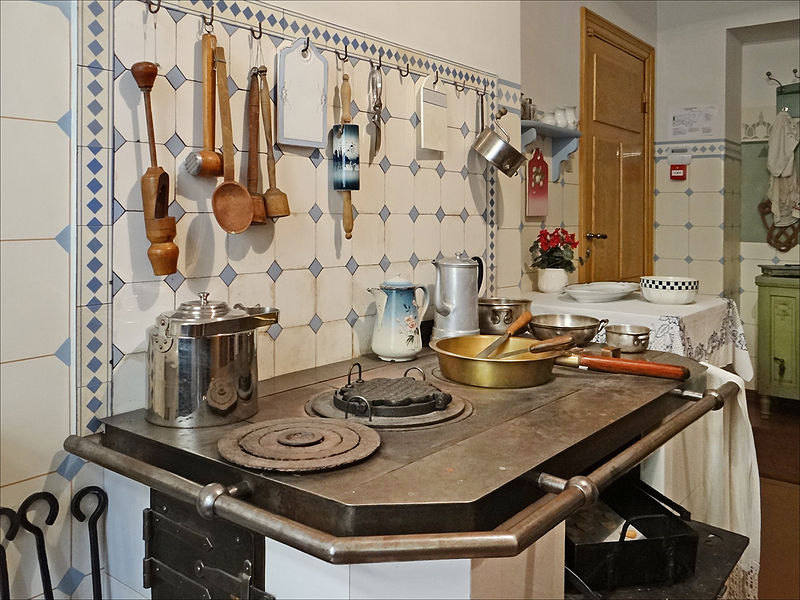If you were asked to name the germiest spots in your kitchen, the sink, trash can and stovetop would most likely take the first to third position. But are they truly the dirtiest spots in the kitchen? The answer is no. Germs are everywhere but they seem to have a lot of cool spots in the kitchen. It’s our responsibility to clean all the dirty spots in the kitchen so that the food prepared therein is not contaminated by pathogenic organisms. Since you know the obvious dirty spots in your kitchen, here are the obscure ones:
Read more about Did you know?
1. Blender Gasket:
Do you know that the blender jar is not the only thing that is messed up after each use? Are you even aware of the fact that its gasket can be cleaned? If your answer is no, here is something for you to consider. Research indicates that if the blender gasket is not cleaned properly after each use, salmonella and E. Coli may build houses therein and contaminate your food. So, make a habit of dissembling the blender jar completely after each use. Afterwards, wash the gasket, blade assembly, jar and lid.
2. Cloth Towel:
Ideally, every kitchen should have a minimum of four towels – à dish towel, a hand towel, a potholder and a spill and liquid wiper. In reality, most kitchens have one or two multifunctional towels. These towels are almost always wet. To make matters worse, they are not washed as often as they should be. This makes them one of the most contaminated kitchen items. Research also indicates that salmonella grows on most damp kitchen clothes. Thus, if you want to prevent cross-contamination, wash your towels with bleach and other disinfectants regularly.
3. Reusable Grocery Bag:
How many market trips has your grocery bag made this year? How many times have you washed or wiped it down before or after use? Now, it’s common knowledge that reusable grocery bags are cost-effective because they help to reduce waste.
Sign up for the Connect Nigeria daily newsletter
However, if they are not cleaned before and after use especially if they were used to carry unwashed produce or raw meat, they become a fertile ground for germs to thrive. Don’t say I did not warn you oh!
4. Refrigerator Handle:
Most homes have more than one occupant. For most of them, the refrigerator is their one-stop-shop for food and water. They make frequent trips to it every day and we are not sure of where they’d been before touching the handle. During food preparation and cooking nko? We make a few trips to the refrigerator as well. But do we wash our hands in between? I hope you can now see why the refrigerator handle made the list.
5. Cutting Board:
Most of us have just one cutting board. Both raw and cooked food is cut on it. In fact, some of the cutting boards in our kitchens are as old as Methuselah. They have scars and grooves to show for their vast cutting experience. They should be retired with benefits but their owners vowed that only death can separate them from their beloved cutting boards. Well, if you are one of those “Till Death do us Part” cutting board owners, it might interest you to know that the battle scars (lol) in your cutting board trap moisture and give harmful bacteria room to multiply. This puts you at great risk of food-borne disease.
Register to attend the Connect Nigeria Business Mixer
6. Dish Sponge:
This is the washer that is never washed, the wet bacterial collector. Some of the dish sponges in our kitchen are old, dirty and weak. They should even be changed at least twice a month. Unfortunately, it is never included in our shopping list because we have this unconscious belief that it’s once in a lifetime purchase.
7. Freezer:
This kitchen equipment is meant for food storage. But most times, we forget all we’ve stored in it. Besides, if there was a leak or spill from any of the storage containers before it was fully frozen, it might take months for you to notice. Also, if power outage were to occur for longer than two days, items in the freezer may defrost and any leak from them may contaminate other foods. This is why it’s best to defrost and clean out the freezer from time to time and dispose the questionable items stored there.
In conclusion, there are several surprisingly dirty spots in your kitchen. Do your best to clean them but most importantly, wash your hands regularly. It’s one of the most effective ways to reduce the spread of bacteria.
Sources
Eat This
Lifehack
Featured Image Source: Wikipedia
Got a suggestion? Contact us: [email protected]


